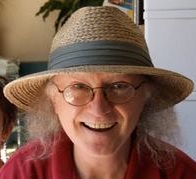4: Catalysis
- Page ID
- 2927
\( \newcommand{\vecs}[1]{\overset { \scriptstyle \rightharpoonup} {\mathbf{#1}} } \) \( \newcommand{\vecd}[1]{\overset{-\!-\!\rightharpoonup}{\vphantom{a}\smash {#1}}} \)\(\newcommand{\id}{\mathrm{id}}\) \( \newcommand{\Span}{\mathrm{span}}\) \( \newcommand{\kernel}{\mathrm{null}\,}\) \( \newcommand{\range}{\mathrm{range}\,}\) \( \newcommand{\RealPart}{\mathrm{Re}}\) \( \newcommand{\ImaginaryPart}{\mathrm{Im}}\) \( \newcommand{\Argument}{\mathrm{Arg}}\) \( \newcommand{\norm}[1]{\| #1 \|}\) \( \newcommand{\inner}[2]{\langle #1, #2 \rangle}\) \( \newcommand{\Span}{\mathrm{span}}\) \(\newcommand{\id}{\mathrm{id}}\) \( \newcommand{\Span}{\mathrm{span}}\) \( \newcommand{\kernel}{\mathrm{null}\,}\) \( \newcommand{\range}{\mathrm{range}\,}\) \( \newcommand{\RealPart}{\mathrm{Re}}\) \( \newcommand{\ImaginaryPart}{\mathrm{Im}}\) \( \newcommand{\Argument}{\mathrm{Arg}}\) \( \newcommand{\norm}[1]{\| #1 \|}\) \( \newcommand{\inner}[2]{\langle #1, #2 \rangle}\) \( \newcommand{\Span}{\mathrm{span}}\)\(\newcommand{\AA}{\unicode[.8,0]{x212B}}\)
In living systems, speed is everything. Providing the reaction speeds necessary to support life are the catalysts, mostly in the form of enzymes.
- 4.2: Activation Energy
- Notice that the reactants start at the same energy level for both conditions and that the products end at the same energy for both as well. Thus, the difference in energy between the energy of the ending compounds and the starting compounds is the same in both cases.
- 4.3: General Mechanisms of Action
- Every chemistry student has had hammered into their heads the fact that a catalyst speeds a reaction without being consumed by it. In other words, the catalyst ends up after a reaction just the way it started so it can catalyze other reactions, as well. Enzymes share this property, but in the middle, during the catalytic action, an enzyme is transiently changed. Such changes may be subtle electronic ones or more significant covalent modifications.
- 4.4: Substrate Binding
- Another important difference between the mechanism of action of an enzyme and a chemical catalyst is that an enzyme has binding sites that not only ‘grab’ the substrate (molecule involved in the reaction being catalyzed), but also place it in a position to be electronically induced to react, either within itself or with another substrate. The enzyme itself may play a role in the electronic induction or the induction may occur as a result of substrates being placed in very close proximity to each
- 4.5: Enzyme Flexibility
- As mentioned earlier, a difference between an enzyme and a chemical catalyst is that an enzyme is flexible. Its slight changes in shape (often arising from the binding of the substrate itself) help to position substrates for reaction after they bind. These changes in shape are explained, in part, by Koshland’s Induced Fit Model of Catalysis, which illustrates that not only do enzymes change substrates, but that substrates also transiently change enzymes.
- 4.6: Active Site
- Reactions in enzymes are catalyzed at a specific location known as the ‘ active site ’. Substrate binding sites are located in close physical proximity to the active site and oriented to provide access for the relevant portion of the molecule to the electronic environment of the enzyme where catalysis is initiated.
- 4.7: Chymotrypsin
- Consider the mechanism of catalysis of the enzyme known as chymotrypsin. Found in our digestive system, chymotrypsin’s catalytic action is cleaving peptide bonds in proteins and it uses the side chain of a serine in its mechanism of catalysis. Many other protein- cutting enzymes employ a very similar mechanism and they are known collectively as serine proteases. As aprotease, it acts fairly specifically, cutting not all peptide bonds, but only those that are adjacent to specific amino acids in t
- 4.8: Enzyme Parameters
- Scientists spend a considerable amount of time characterizing enzymes. To understand how they do this and what the characterizations tell us, we must first understand a few parameters. Imagine I wished to study the reaction catalyzed by an enzyme I have just isolated. I would be interested to understand how fast the enzyme works and how much affinity the enzyme has for its substrate(s).
Dr. Kevin Ahern and Dr. Indira Rajagopal (Oregon State University)


